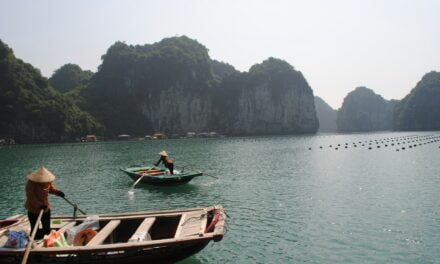Tourism in Asia is leading the industry’s recovery in 2023 after a sluggish rebound in the early stages following the global pandemic.
Additionally, the recovery of tourism within the Asia-Pacific region is being driven by Asian travellers, Pacific Asia Travel Association said on Monday in a report.
PATA Chairman Peter Semone said: “The overall growth in international visitor arrivals within the Asia Pacific is primarily fuelled by Asia, serving as both a source and destination region, with mainland China playing a dominant role in visitor flows.”
Slow recovery of tourism in Asia
This followed a slow recovery in 2022 in comparison to its peers. The number of international visitor arrivals into and across Asia in 2022 only reached 27% of 2019 levels. This is a stark contrast to the Americas region, with a recovery rate of 69%, followed by the Pacific with around 57%.
“Although Asia may have been slower in returning to growth up until 2022, the early 2023 figures show a very powerful return to dominance in the Asia Pacific mix of arrivals,” PATA said.
PATA is a non-profit membership-based association that aims to develop the tourism industry in the Asia-Pacific region.
Asia picks up speed in 2023
Asia has had the strongest performance out of the regions when looking at international visitor arrivals year-to-date, the period-to-period growth rate as well as the period-to-period increase in absolute numbers of international visitor arrivals.
“Among all the source markets in the Asia Pacific region, mainland China is understandably the most significant in terms of volume,” PATA said.
In 2019, it accounted for almost 30% of the international visitor arrivals from Asia and 19% of the total aggregate visitor numbers to Asia Pacific destination, PATA added.
However, this changed in early 2023 after China opened its borders and Chinese travellers re-entered the market. This may pose some challenges to still-recovering industries across APAC.
“Visitor growth from China has been relatively subdued until now. However, with the relaxation of most pandemic-imposed restrictions, we can now expect rapid change. Experience shows us that when change occurs in China, it is both rapid and impactful,” Semone said.
“The question, however, is whether the destinations in Asia Pacific are prepared, as change involves not only an increase in visitor numbers but also evolving expectations and demands from these visitors.”
Outlook
Looking ahead, PATA forecasted earlier this year that international visitor arrivals under the medium scenario at the end of 2023 will have reached close to 76% of pre-pandemic levels in 2019.
“This is expected to further increase to 107% in 2024 and 116% in 2025. The wave is coming, and we must prepare ourselves to ensure that we have a better, stronger and more resilient tourism and travel industry,” Semone said.






